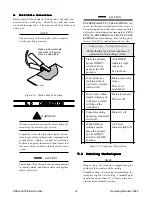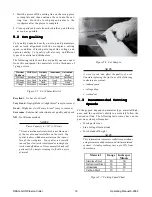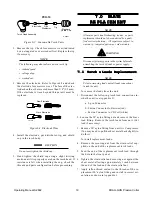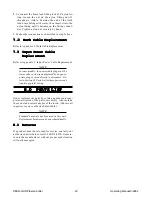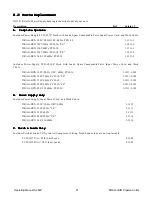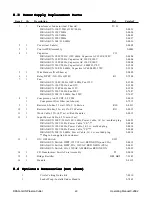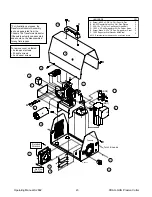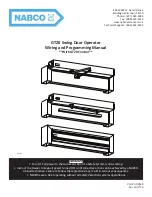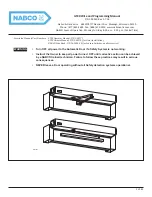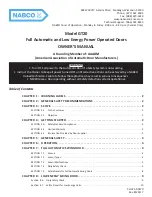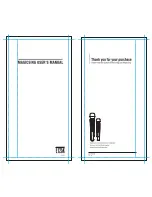
Operating Manual 0-2682
9
DRAG-GUN Plasma Cutter
2.0 INTRODUCTION
2.0 INTRODUCTION
2.0 INTRODUCTION
2.0 INTRODUCTION
2.0 INTRODUCTION
This manual contains descriptions, operating instructions
and basic maintenance procedures for the DRAG-GUN
Plasma Cutter. Read this manual thoroughly. A com-
plete understanding of the characteristics and capabili-
ties of this equipment will assure the dependable opera-
tion for which it was designed.
WARNING
Service of this equipment is restricted to Thermal
Dynamics® trained personnel; unqualified person-
nel are strictly cautioned against attempting re-
pairs or adjustments not covered in this manual,
at the risk of personal injury and/or voiding the
Warranty.
2.1
2.1
2.1
2.1
2.1 What is Plasma?
What is Plasma?
What is Plasma?
What is Plasma?
What is Plasma?
A. Plasma Gas Flow
A. Plasma Gas Flow
A. Plasma Gas Flow
A. Plasma Gas Flow
A. Plasma Gas Flow
Plasma is defined as a gas which has been heated to
an extremely high temperature and ionized so that it
becomes electrically conductive. The plasma arc cut-
ting and gouging process use this plasma to transfer
an electrical arc to the workpiece. The metal to be cut
or removed is melted by the heat of the arc and then
blown away.
In a Plasma Cutting Torch a cool gas (in this case, air)
enters Zone B (refer to Figure 2-1), where a pilot arc
between the electrode and the torch tip heats and ion-
izes the gas. The main cutting arc then transfers to
the workpiece through the column of plasma gas in
Zone C.
By forcing the plasma gas and electric arc through a
small orifice, the torch delivers a high concentration
of heat to a small area. The stiff, constricted plasma
arc is shown in Zone C (Figure 2-1). Direct current
(DC) straight polarity is used for plasma cutting, as
shown in the illustration.
Zone A (Figure 2-1) is used as a secondary gas that
cools the torch. This gas assists the high velocity
plasma gas in blowing the molten metal out of the cut
allowing for a fast, slag-free cut.
;;
;;
;;
;
;
;
;
;
;;
;;
A-00002
Workpiece
Power
Supply
+
_
C
B
A
Figure 2-1 Typical Torch Head Detail
B. Gas Distribution
B. Gas Distribution
B. Gas Distribution
B. Gas Distribution
B. Gas Distribution
The single gas used is internally split into plasma and
secondary gases. The plasma gas flows into the torch
through the negative lead, through the gas distribu-
tor, around the electrode, and out through the tip ori-
fice. The secondary gas flows down around the out-
side of the torch gas distributor, and out between the
tip and shield cup around the plasma arc.
C. Pilot Arc
C. Pilot Arc
C. Pilot Arc
C. Pilot Arc
C. Pilot Arc
When the torch is started a pilot arc is established be-
tween the electrode and cutting tip. This pilot arc cre-
ates a path for the main arc to transfer to the work.
D. Capacitive Discharge (CD)
D. Capacitive Discharge (CD)
D. Capacitive Discharge (CD)
D. Capacitive Discharge (CD)
D. Capacitive Discharge (CD)
Because direct current (DC) alone is not sufficient to
strike and maintain the pilot arc, CD is also used. The
capacitive discharge jumps between the tip and elec-
trode with the DC following. (Note: This may not ap-
ply to all unit models).
E. Main Cutting Arc
E. Main Cutting Arc
E. Main Cutting Arc
E. Main Cutting Arc
E. Main Cutting Arc
DC power is also used for the main cutting arc. The
negative output is connected to the torch electrode
through the torch lead. The positive output is con-
nected to the workpiece via the work cable and to the
torch through a pilot wire.
Содержание Drag-gun
Страница 2: ......


















